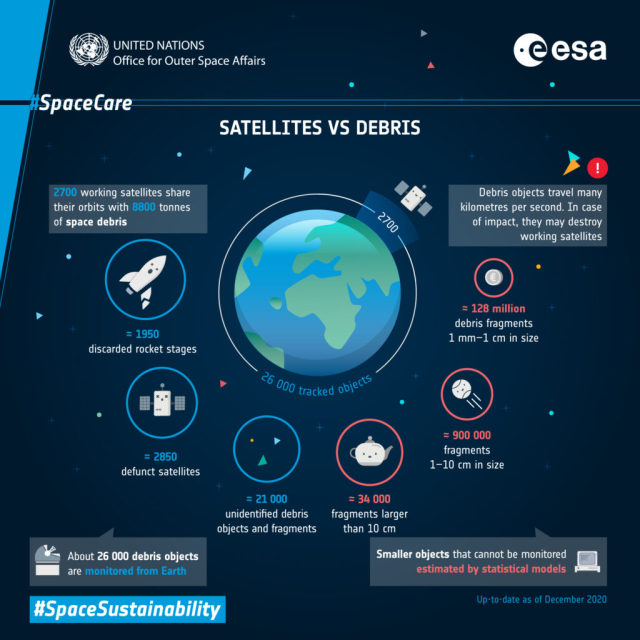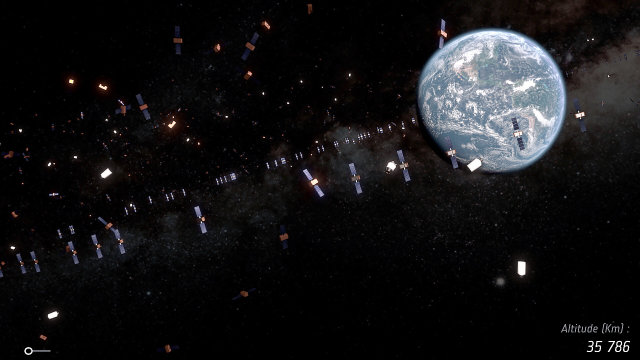The end of the 2010s was marked by an explosive growth of orbital groups of different countries. And it's not just about Elon Musk's Starlink — the same China brings out three dozen satellites a year. And the more equipment there is in the near-Earth space, the more acute the problem of garbage becomes. And the ESA decided to once again remind everyone about this extremely important topic.
This is done in the format of a series of podcasts, each of which is accompanied by an infographic illustration. The issues cover the main problems associated with the littering of orbits, and ways to solve them. This project is a joint effort between the European Space Agency (ESA) and the United Nations Office for Outer Space Affairs (UNOOSA).
The first such podcast has already been published on the official ESA website. In it, the presenter discusses with the head of the ESA Department for Space Debris Tim Flohrer (Tim Flohrer) and a researcher at UNOOSA Nathalie Ricard (Nathalie Ricard) the scale of the problem. And the main indicators of littering near-Earth space are illustrated with this image:

The blue color indicates exactly known data, and the red color indicates the data obtained as a result of calculations based on statistical models (for those objects that cannot be recorded by ground means). All values are rounded for ease of perception and are given as of December 2020. There are 2,700 active satellites orbiting the Earth and 8,800 tons of space debris-26,000 tracked objects. The largest among the debris are 1950 spent upper stages and upper stages of rockets, as well as 2,850 failed satellites. Another 21,000 objects and fragments have not been identified. Beyond the resolution of ground-based instruments, there are 34,000 fragments larger than 10 centimeters, 900,000 fragments ranging in size from one to 10 centimeters, and 128 million even smaller objects.
Image source: ESA, UNOOSA
The authors of the project do not deny the importance of orbiters — they expand the capabilities of humanity and serve it for the good. However, the problem of space debris should not be forgotten. ESA and UNOOSA have repeatedly discussed this topic with representatives of the aerospace industry, now it is the turn of the general public. The idea behind the infographic podcast series is to promote a smart approach to space exploration.
Despite the vast expanses around our planet, there are a limited number of orbits that are convenient for each specific purpose. And there's not much space on each of them to share with the trash. And given the speed of movement of objects even in near-Earth space (several kilometers per second), the collision of satellites with small fragments is fatal. What can we say about the meeting of two large objects: it will generate a fantastic amount of debris, further aggravating the situation.
No, there is no question of a semi-mythical "Kessler syndrome", but space debris can greatly spoil the lives of scientists, engineers and commercial operators of spacecraft. And it can't be said that all satellite manufacturers take the problem of orbital debris lightly. For example, the devices of the Starlink satellite constellation are designed so that they are guaranteed to enter the atmosphere and completely burn up even if the equipment fails. A similar approach is followed by competing developments.

